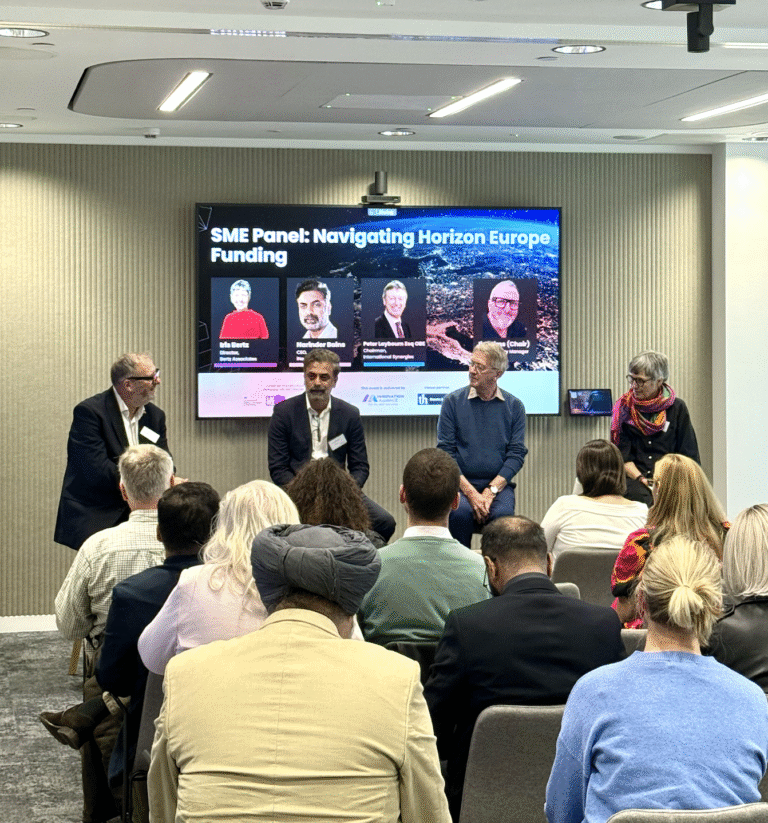A diverse cross-sector audience recently had the opportunity to meet with the Technology Strategy Board (TSB) and find out about its priorities, activities and funding programmes at Growth for Innovation, held recently at Staffordshire University. This was a very timely event in the run-up to the publication of the TSB’s Delivery Plan 2012-2013 this week. ‘Innovation is a team sport’, commented Sandra Booth, of Staffordshire University, in an opening addresses. And, certainly, a team approach was very much the theme of the day.
Changes to the public funding and innovation support landscape for science and technology have been significant in the last couple of years. For businesses, universities and research institutions, it has become more challenging to detect where the best opportunities lie for not just funding but also non-financial activities that bring innovative and economic benefits.
TSB provides many opportunities. It is not a catch-all for everything innovative – ‘’we cannot make innovation happen alone, but we can help’’, says Iain Gray, TSB’s CEO. It is not gatekeeper to all of the funding and support channels to science and technology success. However, it does provide a plethora of enablers, for example, challenge-led funding options and information and discussion portals. These can kick-start market-led innovations, create new business opportunities and stimulate economic growth. Indeed, this resourceful approach aligns much with the active standpoint we have taken, as Birmingham Science City, since our inception in 2005.
 In the not so distant past, public grant funding was pretty readily available. Getting funding was a devil-in-the-detail business, but a very worthwhile one as the public sector and its purse were dependable and fruitful sources of strategic support and investment.
In the not so distant past, public grant funding was pretty readily available. Getting funding was a devil-in-the-detail business, but a very worthwhile one as the public sector and its purse were dependable and fruitful sources of strategic support and investment.
These days, after significant economic belt-tightening, the world of innovation investment and development is a tougher one. But we must remember two things. The piggy bank is not actually empty, as the TSB Delivery Plan 2012-13 confirms, £250m will be made available to support market-led innovation through 60 new competitions. Second, the government is actively promoting greater freedom for collaborative innovation partnerships to determine their own course. From sceptical quarters, there are moans in favour of more structure and more instructions- as per the old days- and comments that the government is somehow stuck for words as it fails to identify market solutions, as it used to. This return is simply not an option, ideologically or practically. More money isn’t always the solution. Moreover, it is no more the government’s job to find all of the answers and provide all of the resources, than it is for only batsmen to win a game of cricket or only strikers to score a goal.
TSB’s Director of Enterprise and Communications, Allyson Reed, underlined the need for businesses, universities, RTOs and public sector organisations to understand business success in the long-term: this cannot mean government filling in all the boxes and being heavily prescriptive. Space is needed to create ‘‘holistic rather than ‘point’ innovations’’. Ewan Lamount, whose company Legendary Games has been recent beneficiary of TSB support and funding added: ‘’The TSB phrases broad questions to encourage innovative thinking, collaboration, market contextualisation from ‘people who know’’’- these being suppliers and consumers of innovative products and services.
The point is that private, public, HEI and research sector innovators get together and decide how to answer the questions, by redefining and refining them and then providing the answers. The rules of the  game are changing so these cross-sector and cross-disciplinary teams need to be more collaborative, more imaginative, and more realistic than ever before in what they can do. This year’s TSB Delivery Plan is especially emphatic about all of this, in strategic and operational terms, as it strives to connect business with better brokering and support services, public funding, private capital and the government as a lead customer.specially emphatic about all of this, in both strategic and operational terms, as it strives to connect business with better brokering and support
game are changing so these cross-sector and cross-disciplinary teams need to be more collaborative, more imaginative, and more realistic than ever before in what they can do. This year’s TSB Delivery Plan is especially emphatic about all of this, in strategic and operational terms, as it strives to connect business with better brokering and support services, public funding, private capital and the government as a lead customer.specially emphatic about all of this, in both strategic and operational terms, as it strives to connect business with better brokering and support
So what does the TSB have to offer? Emily Nott, TSB’s Research Base Liaison Manager, gave us a comprehensive summary:
SMART-For SMEs to help with proof of market, proof of concept and development of prototype.
SBRI– Grants to lever public procurement budgets to stimulate innovation. SBRI provides a route to market, 100% funding and a lead customer in the form of a public sector organisation looking to procure innovative products and services.
Collaborative R and D Funding– Supports innovation through business-to-business and research base-to-business collaboration, around thematic priority areas. Available for all sizes of business, academic and research transfer organisations, with 50% match required from private sector partners.
Launchpad– This supports clusters of hi-tech companies in a specific locations and is designed to benefit small and medium sized businesses. (There is no Launchpad website, but there will be announcements made through the TSB website, when competitions arise.)
Entrepreneur Missions– These are delivered in partnership with UK Trade and Investment (UKTI). Groups of companies are taken abroad and introduced to new markets and business cultures.
Innovation Vouchers– TSB will re-launch this popular Vouchers scheme in September, targeted towards one specific area, yet to be announced. However, an Innovation Vouchers Portal will be provided, to signpost to local innovation schemes with foci wider than those of the TSB’s specific concentration. Further information will be announced, soon.
Competitions for TSB funding.
Knowledge Transfer Networks and Special Interest Groups-Virtual ‘spaces’ to get innovators talking to one another and provide opportunities for networking, notifications of funding and/or partnering opportunities, information and news, and updates in policy and regulation.
Catapults– Seven centres are being created to address fields of science and technology that will develop a critical mass for business and research innovation. They will be available to help businesses access R and D, funding and new markets.
The rules of the market-led innovation game are in transition and the TSB provides plenty of options through which we can engage in and adapt to the new world in which we find ourselves.
All the best
Susannah Goh





